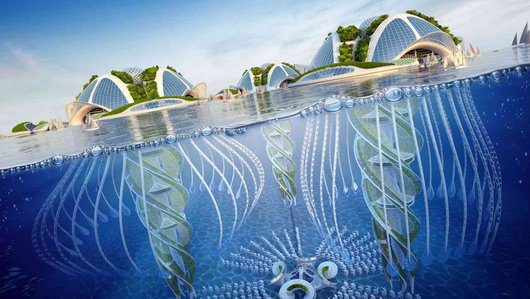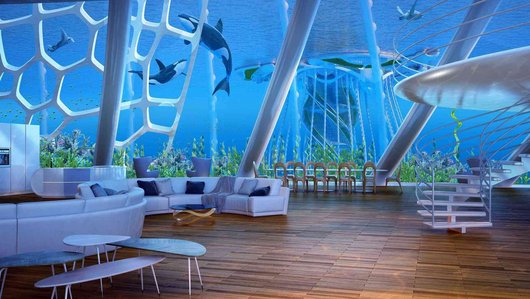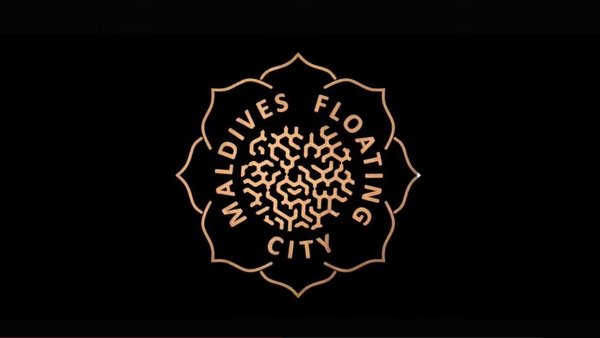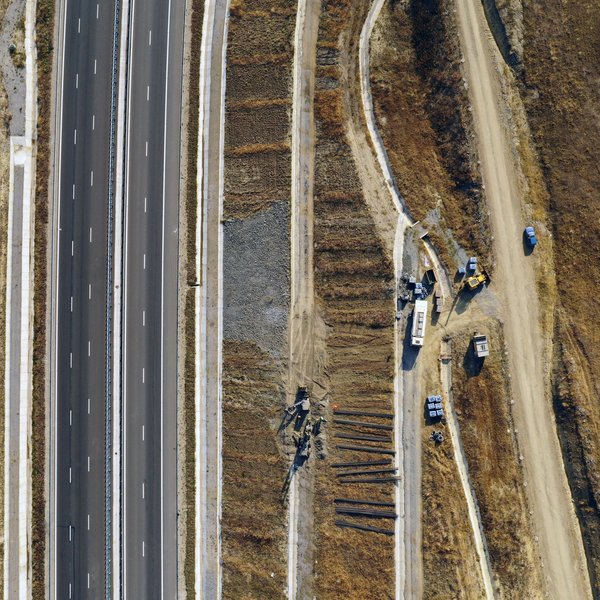![[Translate to Englisch:] [Translate to Englisch:]](/fileadmin/_processed_/a/b/csm_pexels-joao-vitor-heinrichs-1787035_d94d4188bf.jpg)
Under water: concepts for living with floods
The Statue of Liberty in New York is in water up to her neck. In Los Angeles the letters of the iconic HOLLYWOOD sign are bobbing in the floodwater. It is too late. The disaster has happened. Huge waves wash over the city and country. All over the world. There is no escape.
Apocalyptic scenes like these are already familiar from disaster movies like The Day After Tomorrow. It is unlikely that we will experience anything with this level of intensity. And yet this is not as far removed from reality as we would like. Because one thing is clear: sea levels are rising. Not at Biblical-flood levels, but consistently.
In many coastal cities, groundwater will flood twice as much land as the tide from the sea.
Differing forecasts and a big problem
The organisation Climate Central estimates that global sea levels will rise by up to two metres in the course of the century. This will have fatal consequences for around 200 million people. One expert thinks it could be even worse: “We need to prepare for a rise in sea levels of three metres, maybe even more. We don’t know precisely whether it will happen within the next 35 years or if it will take longer, but it will happen for sure”, says Kristina Hill, Professor of Urban Ecology at the University of California in Berkeley in an interview with Süddeutsche Zeitung Magazin. She researches innovative solutions to save coastal regions. But she says it is not just the masses of water from the sea that are problematic. “In many coastal cities, groundwater will flood twice as much land as the tide from the sea. Because when sea levels rise, they can also push up the groundwater – even in areas that used to be considered safe”.
Watertight ground floors and prodigious use of sand
There’s a lot that every single one of us can do to at least mitigate the consequences of the climate crisis. But there are also solutions for the worst-case scenario. After all, this has often happened in the past. Affected regions have taken precautions. There are dams, water pumps and overflow basins. Near-natural habitats have been restored and buildings upgraded. In New Orleans, the levees were strengthened after Hurricane Katrina, flood walls and dam barriers were built. But the expert does not necessarily see this as the best solution: “Many people in New Orleans no longer see the water... You lose awareness of your surroundings”, says Kristina Hill in an interview with Süddeutsche Zeitung Magazin. And she gives a positive example: “Contrast it with Hafencity Hamburg that has built waterproofed ground floors in the most vulnerable areas, with watertight garages and connecting walkways on the first floor. I particularly like the fact that the paths are wide enough for an emergency vehicle”.
New building grounds and innovative solutions
The Netherlands has been dealing with this issue for quite some time. After all, half of the country lies less than one metre above sea level and about a quarter of it is actually below. That's why, for example, 21.5 million cubic metres of sand was piled up in front of the actual dune belt in the south as part of the Sand Motor project. “The sand moves with the waves and the wind, like a muscle that actually protects the shore and the communities behind the dunes”, explains Kristina Hill.
But other solutions have been implemented as well. In 2012, Steigereiland was completed: one of three artificial islands with floating houses. Together they form the new district of Ijburg in the east of Amsterdam, which already had 24,000 residents in 2020.
With Waterstudio.nl, the Netherlands already has an architectural firm specialising in homes on the water. What may well be their most impressive project is about to be realised in the Maldives: Maldives Floating City. After more than a decade of development – and just ten minutes by boat from the capital, Male – the world’s first floating island city is taking shape. Thousands of residences will float along a flexible grid across a 200-hectare lagoon. Viewed from above, the city evokes a so-called brain coral. And speaking of corals, artificial coral reefs will be attached to the underside of the island. Construction on this exceptionally sustainable project is set to begin in 2022.
There are several concepts involving floating homes. One that resembles something from a sci-fi movie is the AEQUOREA project by Vincent Callebaut Architectures.The oceanscrapers, as the buildings are called, are skyscrapers that are partially above water whilst simultaneously reaching depths of 1,000 metres. With 250 floors each, they will house 10,000 residential units as well as public facilities. And there’s not just ample space for permaculture and agro-ecology, the construction components are also set to come from a 3D printer, composed of algae and plastic waste found in the seas.
Utopia or already happening? Either way, one thing is clear: people all over the world are addressing the consequences of the climate crisis. And doing something to counter it. They are developing innovative concepts that save lives and change the world. Which concepts will actually be realised and which will have to be realised remains to be seen. In any case, an exciting future awaits.




Further Information
- Google Earth has made the impacts of the rise in sea levels visible and gives you the chance to visit different cities that are under water.
- You can read the full interview with Kristina Hill here - only available in German.
Header: (c) Vincent Callebaut Architectures



![[Translate to Englisch:] (c) UBM Development [Translate to Englisch:] (c) UBM Development](/fileadmin/_processed_/3/9/csm_20190325btpa_mgr_th62_k06_day_prefinal01-2-scaled_864227496b.jpg)